Kollektiv Turmstrasse, dopo la release del suo ultimo lavoro discografico “Unity of Opposities” e la presentazione del suo live nell’ ultima edizione dell’Amsterdam Dance Event, si racconta su Parkett.
Kollektiv Turmstrasse è il nostro ospite odierno su Parkett. Un artista che negli anni ha scandito con la sua musica il quotidiano, che ha saputo leggere e descrivere con il suo sound la parte emozionale delle nostre vite e proiettarla nel dancefloor.
Il progetto, nato oltre che dal Nico Plagemann anche da Cristian Hilscher, sta vivendo una seconda stagione. La separazione tra i due, avventura per la necessità di intraprendere differenti direzioni creative, ha portato Nico a ridare nuova forma alla propria concezione di house music, inglobando tutte le influenze che hanno fatto parte del grande bagaglio artistico che ha segnato il progetto.
“Unity of Opposities” non è solo il titolo dell’ ultimo lavoro discografico, ma lo slogan significativo di una maniera di intendere l’elettronica contemporanea. La ricerca musicale è guidata dall’ istinto, da un’attenzione verso il circostante che si traduce in un’amorevole rielaborazione della natura.
YAP, acronimo di You Are Perfect, è la serie di eventi che Kollektiv Turmstrasse porta avanti preservando lo spirito di inclusione e rispetto verso il pubblico. Un luogo in cui la diversità viene percepita nella sua enorme ricchezza.
Nico ci ha aperto le porte del suo universo, fantasioso e al contempo così autentico, in cui la sua estrema umiltà dona un valore aggiunto alla sua illimitata creatività, a tratti fanciullesca. Forse sta tutto lì il segreto dell’ immediata capacità di emozionare il prossimo che questo artista non smette mai di donarci. Vi lasciamo a questa chiacchierata: intensa, mai banale, in pieno stile Kollektiv Turmstrasse.
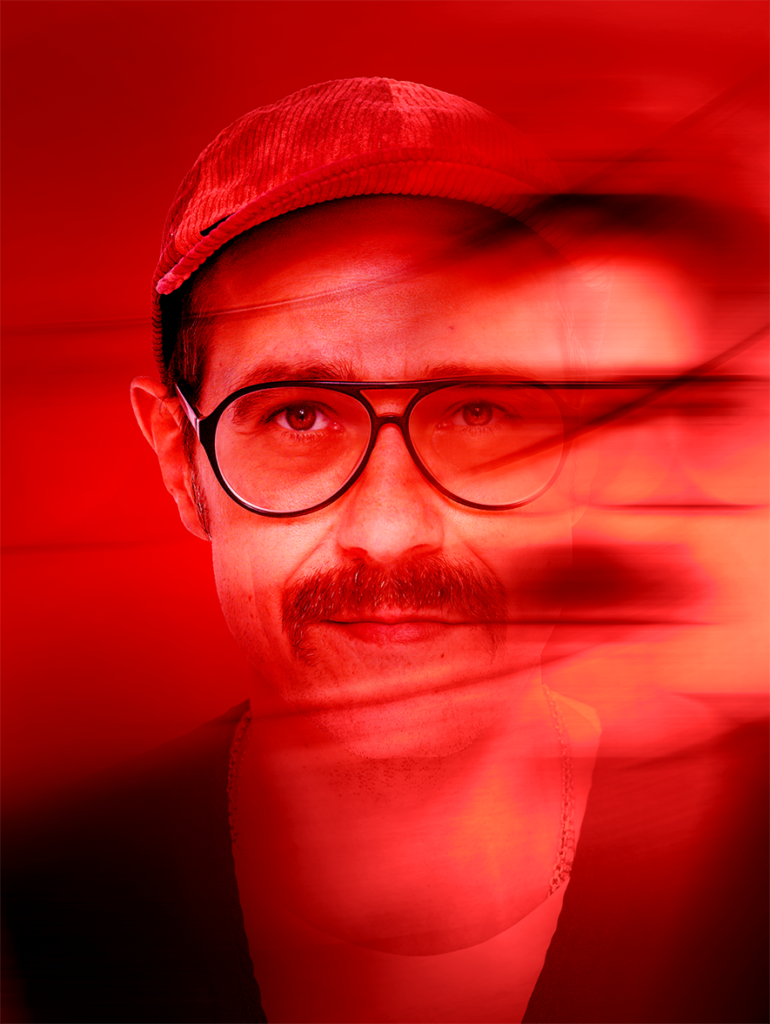
Ciao Kollektiv Turmstrasse, benvenuto su Parkett; è un grande privilegio per noi ospitarti qui. Il periodo di lockdown e l’era del Covid sono stati molto difficili, soprattutto per una persona come te, con una forte sensibilità artistica e una sfera emotiva piena di colori. Cosa ti ha lasciato quel periodo e come stai oggi?
Credo che sia stato un momento difficile per tutti; le limitazioni professionali erano molto impegnative per tutti. Tuttavia mi sono concentrato molto sulla mia famiglia e, ovviamente, sulla musica. Questo mi ha dato molto. Durante quel periodo, ho potuto provare ancora più di prima. Quando sei in tournée ogni fine settimana, è difficile trovare il tempo per simili sperimentazioni. In questo periodo è nato anche Unity of Opposites 1, che ho concepito come uno spettacolo dal vivo in un evento virtuale con l’agenzia DEMODERN. È stato un periodo buio, onestamente. Sentivo che non sarebbe mai finita e poi c’è stata la mancanza del mio compagno, che mi ha cambiato nel profondo. Ho dovuto compensare molto. Ormai sento che tutto ha raggiunto una certa normalità e ne sono grato.
“Unity of Opposites” riassume perfettamente la tua idea di musica senza barriere stilistiche. Cosa unisce gli opposti in questo album e cosa, in generale, nel tuo modo di concepire il tuo universo sonoro?
È facile rispondere. Alla fine, sono io. Ho realizzato l’album per me stesso e, di conseguenza, tutti questi diversi stili, approcci e arrangiamenti sono solo una parte di me. Quindi, forse, io sono il tutto più grande quando parliamo dell’album. Il processo di produzione dell’album è stato descritto non come lineare ma come laborioso, volto a catturare un momento e un’emozione in continua evoluzione in ogni traccia.
Eppure sei un artista che può ancora permettersi di realizzare un album che sia una storia e non un assemblaggio di brani. Nel mondo di oggi, fatto di successi che durano pochi mesi, che valore ha per te provare a costruire un’opera più profonda che possa superare i limiti del successo temporaneo?
Onestamente non so se posso permettermelo. L’ho appena fatto, come ho detto prima; anche questo è un album personale, realizzato principalmente per me stesso, per chiudere alcuni capitoli. Ed è sempre importante per me essere artistico e non limitarmi a fornire musica. Forse a volte è esagerato, e forse a volte non lo faccio bene, ma è la mia arte e alla fine decido se lo voglio o no. Me ne sono reso conto durante la produzione; Voglio offrire qualcosa di artistico, qualcosa di valore che possa durare più a lungo dei prossimi due mesi nella Top Ten.
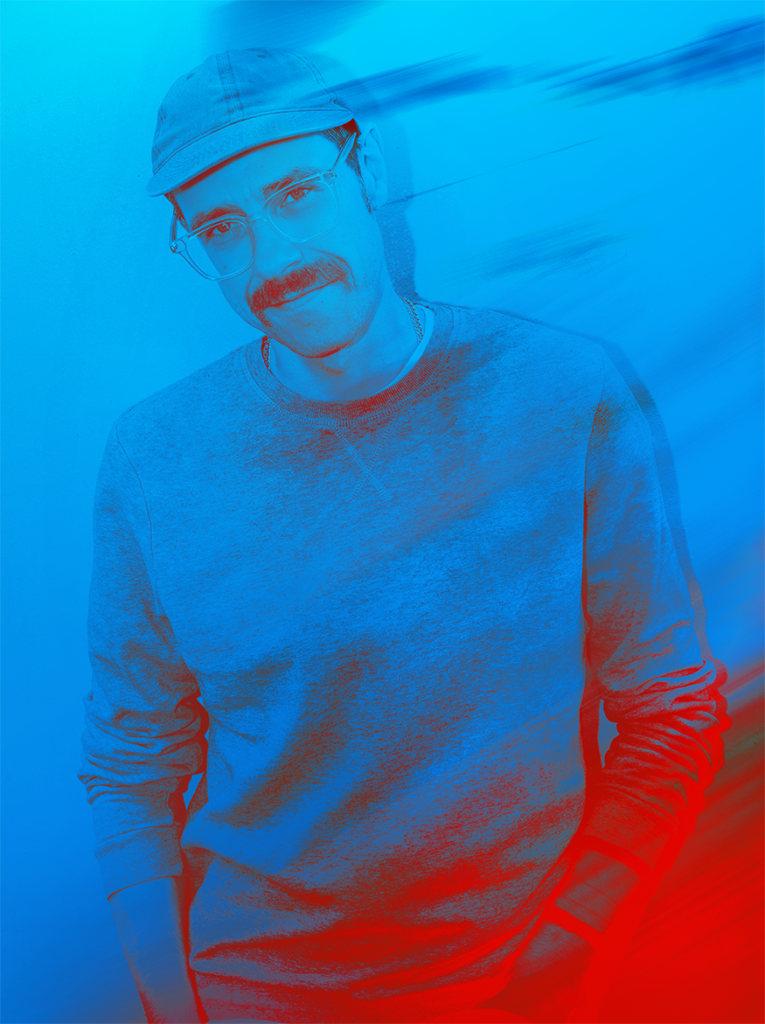
Ma non sono sicuro che questo album sia davvero adatto per parlare di successo. Come ho detto, l’ho realizzato principalmente per me stesso, e sono emerse molte cose che potrebbero non piacere o che semplicemente deludono le aspettative. Ma non ho pensato alle produzioni, quindi sto solo rivelando una parte di me, e devo essere preparato per questo. Ci sono ancora cose di cui mi pento. Ho dovuto interrompere tutto il lavoro. Spotify o lo streaming sono diventati così importanti che bisogna scomporre radicalmente l’arte per renderla in qualche modo fruibile. Qui puoi già vedere l’influenza dello zeitgeist. Per me, l’album suona male su Spotify. Non è quello che volevo, non il viaggio che desideravo per l’ascoltatore.
L’album presenta una collaborazione con Joel Stewart. Perché hai voluto fortemente la sua presenza nel tuo album, e quale nota emotiva rappresenta nel tuo lavoro?
La parte difficile è stata non inserire più tracce con Joel nell’album. Perché no? Ho iniziato molte idee con Joel e noi, o io, abbiamo notato che tutto era molto bello, quindi perché non usarlo. Molte cose all’inizio erano effettivamente strumentali, ed è stato solo attraverso la Gioia che le cose hanno preso vita davvero. Sì, e Joel mi piace molto anche come persona e come cantante professionista; ha una gamma incredibile. Non potevi sentirlo nell’album. Ma anche Thien non va dimenticato; Thien è un cantante e polistrumentista incredibile, e “Nothing” è ancora uno dei miei brani preferiti dell’album.
Hai anche descritto il lavoro su questo album come un periodo di terapia. Quanto è stato terapeutico per te personalmente?
Naturalmente, come ho già detto, ho realizzato l’album per me stesso. C’è sempre un approccio terapeutico perché in qualche modo puoi lasciare emergere i tuoi sentimenti, emozioni, paure e tutto il resto. A volte di più, a volte di meno, ma in qualche modo la persona completa confluisce in un album. Aiuta parlare di sentimenti, ma posso anche inserirli molto bene nella musica, in ciò che sento o dove mi trovo in questo momento, e attraverso questo gli do anche un significato. Quindi, ho voglia di dare più valore alla musica.
L’ADHD ha sicuramente costituito un punto di vista di osservazione diverso rispetto alla realtà nel tuo percorso di vita. Come incide sulla tua vita oggi e credi che rispetto ad anni fa la diversità sia diventata un vero valore sociale?
Devo dire onestamente che posso anche essere grato che si parli così tanto di diversità. Le persone sono individui e ognuno è diverso e questo dovrebbe essere normale. Per molte persone, questo aiuta a comprendere se stessi, che per anni hanno creduto di essere inferiori o semplicemente di non essere abbastanza bravi. E come nel mio caso, le cure terapeutiche e anche i farmaci possono aiutare a essere socialmente conforme, non che io voglia sempre essere socialmente conforme. Ma mi aiuta nei momenti importanti in cui conta essere neurotipi. Influisce sulla vita di tutti i giorni, ma cerchi di affrontare questo disturbo. Sfortunatamente, la neurodiversità ha più lati negativi che positivi. Ma per non rimanere completamente negativo, vorrei ricordare che la creatività è uno dei maggiori punti di forza quando si parla di ADHD. La creatività trabocca. Non puoi filtrarla del tutto correttamente, e questa è la fortuna che ho. Ho trovato la musica, il mio sbocco in questo senso.
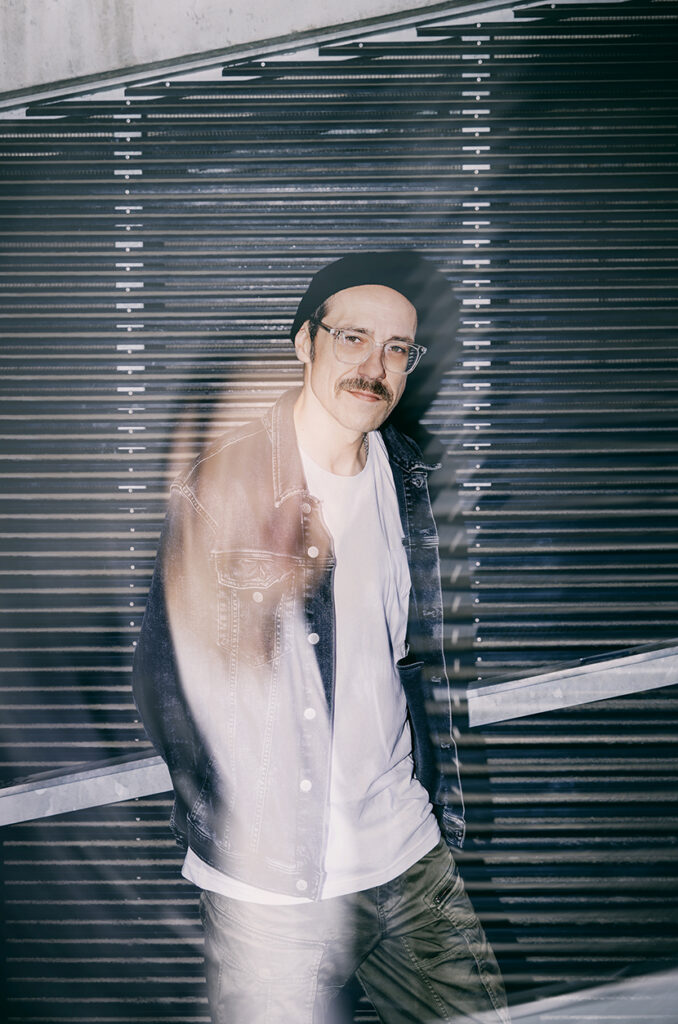
Hai anche presentato la tua performance dal vivo durante l’ultimo Amsterdam Dance Event. Nella dimensione live ho l’impressione che tu riesca a mostrare una nuova parte di te, più leggera e meno malinconica rispetto alla produzione, vero?
È vero; Sto cercando di tornare alla luce, soprattutto musicalmente. È stato tutto troppo profondo e malinconico per lungo tempo. Ma sto davvero cercando di far splendere di nuovo il sole e di conseguenza il mio spettacolo dal vivo è realizzato su questa nuova via.
Oggi nel mondo dell’elettronica assistiamo costantemente a fenomeni artistici e ad autoproclamazioni. Per Kollektiv Turmstrasse cosa significa essere un artista?
La parola artista lo descrive abbastanza bene. Non mi considero un fornitore di servizi o qualcuno che soddisfa le aspettative. Faccio musica principalmente per me stesso e cerco di affrontarla artisticamente. A volte di più, a volte di meno. Quando preparo qualcosa per il mio spettacolo dal vivo, ovviamente, penso anche alla pista da ballo, ma quando lavoro per me stesso, in questo senso è più artistico. Cosa posso ottenere per me stesso? Dove posso ancora andare? Qual è il prossimo passo per migliorare? Di conseguenza, provo molto e cerco solo di essere creativo.
Ultima domanda: quali sono i tuoi prossimi progetti e quando potremo sentirti in Italia?
A dire il vero l’Italia mi manca molto; Non so nemmeno quanto tempo è passato dall’ultima volta che ero lì. A quanto pare, la fan base italiana mi ha in qualche modo dimenticato. Forse semplicemente non sono abbastanza attuale e il mio sound non corrisponde allo zeitgeist. Ma spero che le mie nuove produzioni cambino un po’ questa situazione. Chiaramente sto lavorando su alcune cose nuove. Ci saranno dischi e ci saranno nuovi progetti. Quindi spero e desidero tornare presto in Italia, ma fino ad allora mi limiterò a dire CIAO RAGAZZI.
Noi ti aspettiamo. Grazie per essere stato con noi.
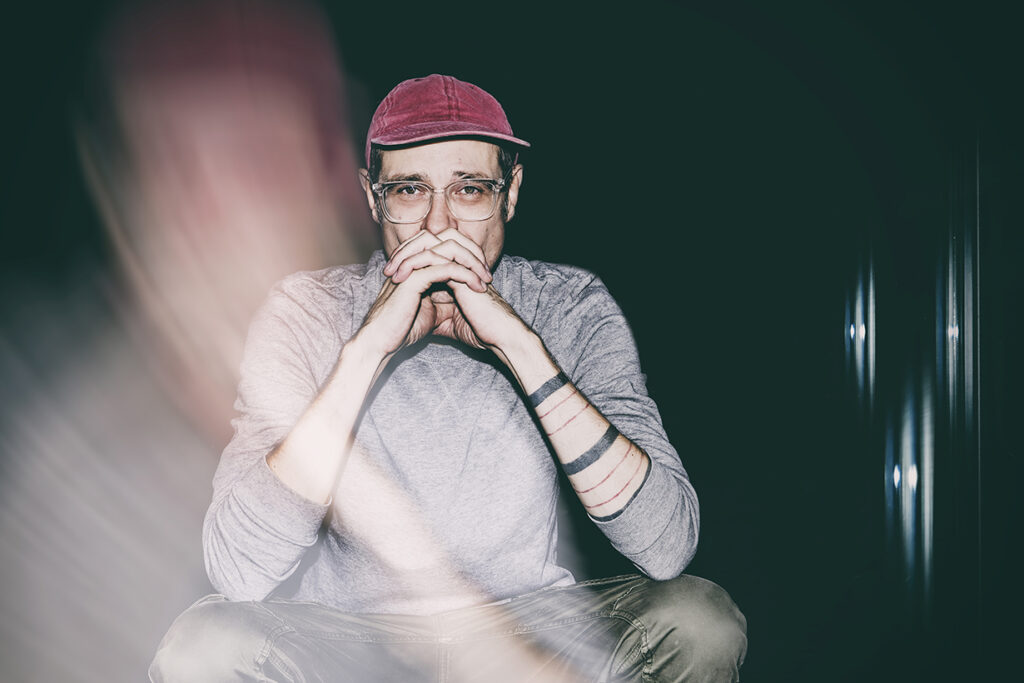
ENGLISH VERSION
Hi Kollektiv Turmstrasse, welcome to Parkett; it is a great privilege for us to host you here. The lockdown period and the Covid era were very difficult, especially for a person like you, with a strong artistic sensitivity and an emotional sphere full of colors. What did that period leave you with, and how are you today?
I believe it was a tough time for everyone; the professional limitations were very challenging for everyone. However, I focused a lot on my family and, of course, on music. That gave me a lot. During that time, I could try out even more than before. When you’re on tour every weekend, it’s hard to find time for such experimentation. Unity of Opposites 1, which I conceptualized as a live show in a virtual event with the agency DEMODERN, also happened during this period. It was a dark time, honestly. I felt like it would never end, and then there was the exit of my partner, which changed a lot. I had to compensate a lot. By now, I feel like everything has reached a certain normalcy and I’m thankful for that.
“Unity of Opposites” perfectly sums up your idea of music without stylistic barriers. What unites opposites in this album and what, in general, in your way of conceiving your sound universe?
That is easy to answer. In the end, it’s me. I made the album for myself, and accordingly, all these different styles, approaches, and arrangements are just a part of me. Thus, I am perhaps the greater whole when we talk about the album.The album’s production process has been described not as linear but as laborious, aimed at capturing an ever-evolving moment and emotion in each track.
Yet you are an artist who can still afford to make an album that is a story and not an assembly of tracks. In today’s world, made up of hits that last a few months, what value does it have for you to try to build a deeper work that can overcome the limits of temporary success?
Honestly, I don’t know if I can afford it. I just did it, as I mentioned earlier; this is also a personal album, primarily made for myself, to close a few chapters. And it’s always important for me to be artistic and not just deliver music. Maybe sometimes it’s exaggerated, and maybe sometimes I’m not doing it right, but it’s my art, and in the end, I decide whether I want it or not. I realized this during the production; I want to deliver something artistic, something with value that might last longer than just the next two months in the Top Ten.
But I’m not sure if this album is really suitable for speaking of success. As I said, I made it primarily for myself, and a lot has emerged that people may not like or that simply disappoints expectations. But I didn’t think about the productions, so I’m just revealing a part of myself, and I have to be prepared for that. There are still things that I regret. I had to break down all the work. Spotify or streaming has become so important that you have to break down art fundamentally to make it somehow economical. Here you can already see the influence of the zeitgeist. For me, the album sounds wrong on Spotify. It’s not what I wanted, not the journey I wished for the listener.
The album features a collaboration with Joel Stewart. Why did you strongly want his presence in your album, and what emotional note does he represent in your work?
The difficult part was not to put even more tracks with Joel on the album. Why not? I started many sketches with Joel, and we, or I, noticed that everything was very beautiful, so why not use it. Many things were actually instrumental at first, and it was only through Joy that things really came to life. Yes, and I also like Joel a lot as a person and as a professional singer; he has an incredible range. You couldn’t hear that on the album. But Thien should not be forgotten either; Thien is an incredible singer and multi- instrumentalist, and “Nothing” is still one of my favorite tracks on the album.
You’ve also described working on this album as a period of therapy. How was it therapeutic for you personally?
Of course, as I mentioned, I made the album for myself. There is always a therapeutic approach because you can somehow let out your feelings, emotions, fears, and everything. Sometimes more, sometimes less, but somehow the complete person flows into an album. It helps to talk about feelings, but I can also pack it very well in music, into what I am feeling or where I am at the moment, and I also give it meaning through that. So, I feel like putting more value into the music.
ADHD has certainly constituted a different observation point of view with respect to reality in your life journey. How does it affect your life today, and do you believe that compared to years ago, diversity has become a true social value?
I must honestly say that I can also be grateful that there is so much talk about diversity. People are individuals, and everyone is different, and that should be normal. For many people, this helps them understand themselves, who believed for years that they were inferior or simply not good enough. And as with me, therapeutic care and also medication can help to be socially conforming—not that I always want to be socially conforming. But it helps me in important moments when it matters to be neurotypical. It does affect everyday life, but you try to deal with it. Unfortunately, neurodiversity has more negative sides than positive. But to not stay completely negative, I would like to mention that creativity is one of the greatest strengths when it comes to ADHD. Creativity just bubbles over. You can’t filter it properly, and that is the luck I have. I found music, my outlet in that regard.
You also presented your live performance during the last Amsterdam Dance Event. In the live dimension, I have the impression that you are able to show a new part of yourself, lighter and less melancholic compared to the production, is that right?
That’s true; I’m trying to get back into the light, especially musically. It has been very deep and melancholic for a long time. But I am indeed trying to let the sun shine again, and accordingly, my live show is designed for that.
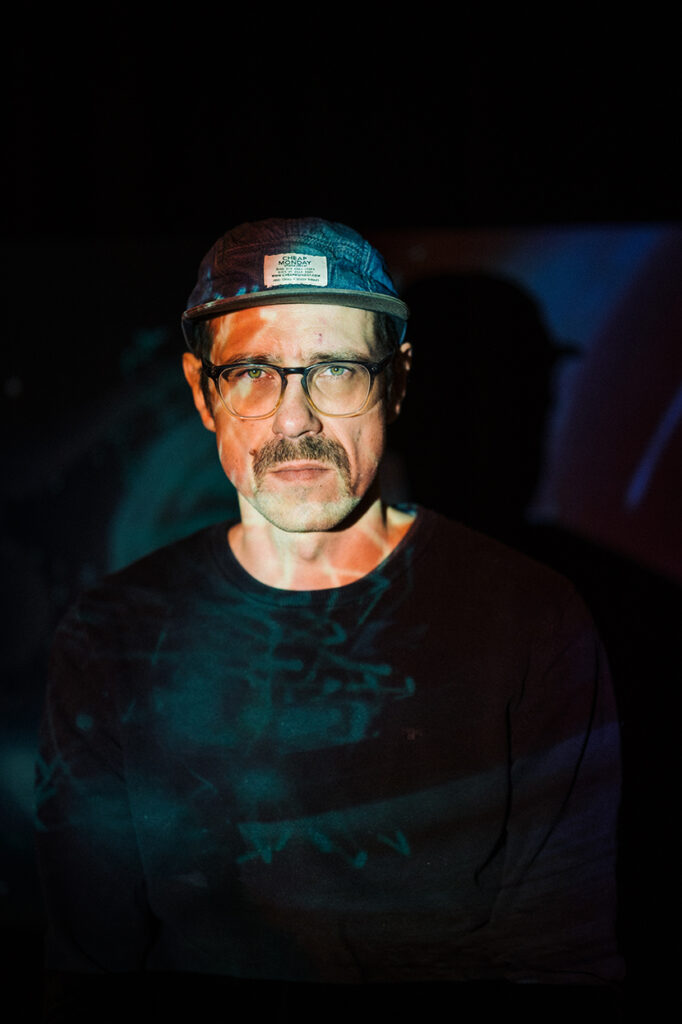
Today in the world of electronics, we constantly witness artistic phenomena and self- proclamations. For Kollektiv Turmstrasse, what does it mean to be an artist?
The word artist describes it quite well. I don’t see myself as a service provider or someone who fulfills expectations. I primarily make music for myself, and I try to approach it artistically. Sometimes more, sometimes less. When I prepare something for my live show, of course, I also think about the dance floor, but when I work for myself, it’s more artistic in that sense. What can I achieve for myself? Where can I still go? What is the next step to get better? Accordingly, I try a lot and just try to be creative.
Last question: what are your next projects, and when will we be able to hear from you in Italy?
To be honest, I miss Italy a lot; I don’t even know how long it’s been since I was there. Apparently, the Italian fan base has somehow forgotten me. Maybe I’m just not current enough, and my sound doesn’t match the zeitgeist. But I hope that my new productions will change a bit of that. Clearly, I’m working on some new things. There will be records, and there will be new projects. So, I hope and wish to come back to Italy soon, but until then, I’ll just say CIAO RAGAZZI.
